|
Sculpture
is
an
ancient
art
form
in
Thailand.
It
flourishes
today
as
it
has
expanded
and
changed
with
the
changes
in
culture
and
the
appearance
of
new
materials.
Thai
sculpture
is
recognized
throughout
the
world
and
Thai
artists
are,
in
turn,
especially
interested
and
influenced
by
the
classical
sculpture
of
Europe
as
well
as
Asia.
One
such
artist
is
Natee
Tubtimthong,
a
highly
educated,
working
sculptor
and
teacher.
JY.
Tell us about yourself.
NT.
I started studying art with my father who is a primary-school art teacher. I regard him as my first art teacher, especially in sculpture. My mother is a saleswoman. She is an inspiration for diligence and patience. I have three siblings. My second younger brother works in advertising and the younger one is studying art as well. After I graduated from junior high school In 1993, I graduated with a Bachelor's degree in sculpture from Silpakorn University at the Faculty of Painting (Faculty of Painting Sculpture and Graphic Arts) and a Master's Degree from the Faculty of Painting in 2007.
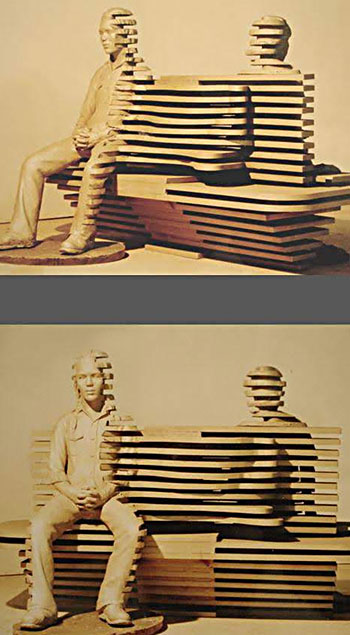 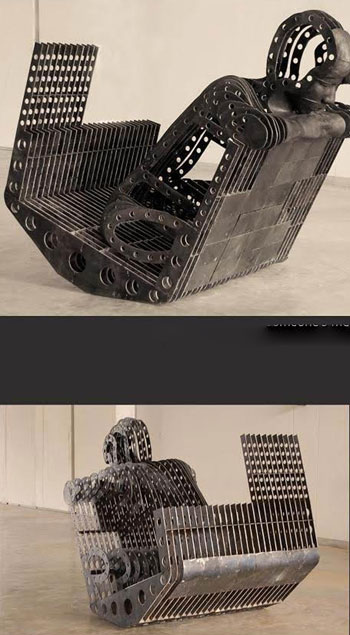
JY.
How has teaching affected your artistic work?
NT.
I started teaching as a part-time lecturer at Sripatum University in the
Faculty of Architecture. Digital Art (faculty name and affiliation at that
time) while still studying for a master's degree by teaching the basics of art:
Art Composition and Modern Art. Later, I was persuaded to be a special
lecturer at Bunditpatanasilpa Institute in the field of sculpture, Faculty of
Fine Arts in 2009. Since then, I have been teaching in the field of sculpture.
In 2013, I was awarded a scholarship from the Italian government to study
arts in Italy for nine months. So I chose to study sculpture in Florence at
the Accademia di Belle Arti di Firenze.
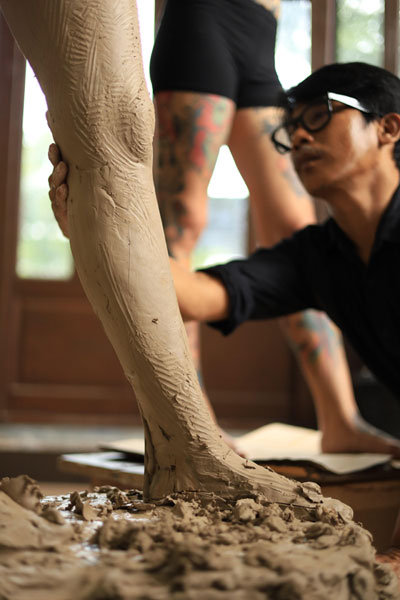
After returning from Italy, I returned to teach at the sculpture department
Faculty of Fine Arts Bunditpatanasilpa Institute as before, joining as a full
-time lecturer in the program and working together to push forward the
teaching methods of sculpture with professors in the field.
Initially, I was interested in making classical sculptures which can be called
Academic style. I also love to travel. Travel to explore various art and
cultural sites both domestically and internationally, including exploring
and traveling in various natural places.
It's really my regular job. It could be called a full-time artist, i.e., a full-time
sculptor. As for the teaching job, it is my favorite part of the job and it plays
a very important role in my personal development.
JY.
Tell us more about the influence of your teaching and academic work
on your artistic work.
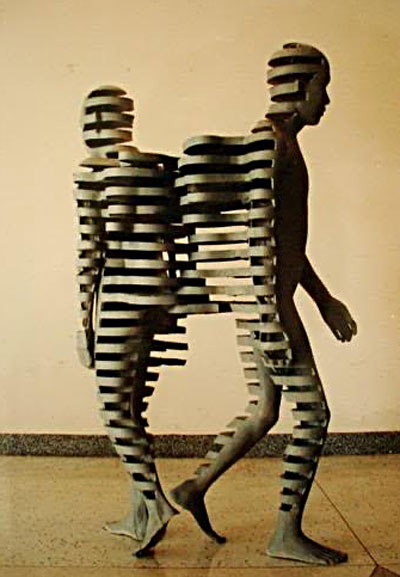
NT
. As mentioned earlier, I am interested in classical sculpture or
academic sculpture as a foundation, but my art work combines academic
characteristics with modern styles and a contemporary approach. Together
with the the geometry of objects or appliances they have various meanings,
to convey inspiration and ideas. Since my home and my life have always
been close to the train station, I merged a train chair with the people I
knew waiting for the train. I combined the complexity of the structure I
created with those portraits to create a picture which in 2006 won a
sculpture bronze medal at the 52nd National Art Competition. I am telling
about my own life in the past, 3-4 years in this piece. It is my most favorite
work in many years of work.
I started teaching art at a private university, which initially wasn't teaching
much in my field of study. I started by teaching the basics of art. It was an
experience that made me see the talents of many children who do not know
how capable they are. It made me think that people can improve if they
have enough determination. Studying art can develop skills and develop
thinking into a career.
After that I was transferred to be a special lecturer at the Faculty of Fine
Arts, Bunditpatanasilpa Institute. There I began to talk with faculty
members in the field of study. I designed a course that can seriously
develop people and see real results. It emphasizes Academic principles,
which may seem at odds with the current trend of teaching art. But the
experience of teaching for many years, showed me that students, if they
have knowledge, have good basic skills and are not worried that they will
develop ideas, do indeed develop styles for contemporary artistic society in
the present trend. which must consist of knowledge and understanding of
other sciences as components such as art history, social sciences,
archaeology, philosophy, economics, etc. These are all my urges to
research, explore, find new experiences to confirm the possibility of
teaching and learning. It gave me confidence in answering questions or
giving students confidence in their approach and career as a sculptor.
When I received a scholarship from the Italian government to study at the
Accademia di Belle Arti di Firenze, it came as a break from studies. I spent
most of my time traveling to see art in museums across Europe. Beyond
Italy I spent months traveling alone to gain as much experience as possible.
After returning from Italy, I also planned to travel back to Europe
regularly. At least once every two years to visit the exhibition. Venice
Biennale held in Venice, and have the opportunity to visit other museums
as well.
I am planning a project to visit other important cultural sites such as
Indian, Chinese, Greek, and the influence on those arts and cultures in
other regions such as Cambodia, Indonesia or in Thailand itself.
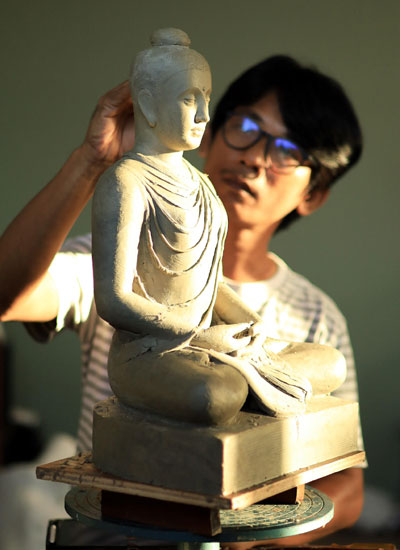
In 2022, I traveled to Pakistan to explore archaeological sites. Visited
various art objects at Taxila including traveling north from Taxila,
especially in the Indus Valley to experience the cultural context, geography,
climate. I think coming to the place where those cultures actually occur can
create a strange perception not just seen in books or in museums far from
the origins of that culture. In October this year I went to Cambodia to
explore Khmer art, especially the temples in Siem Reap, Kampong Thom
and other cities further afield. And of course, the cultural sites in the
country are places that I regularly visit.
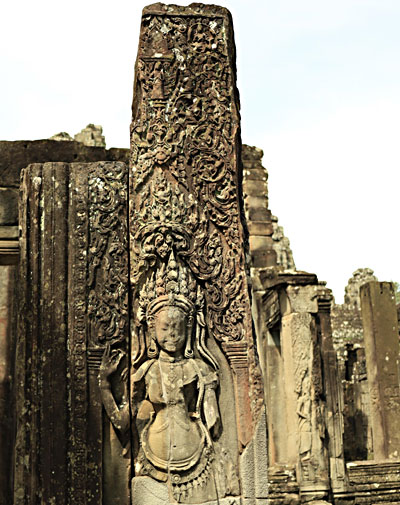
JY.
What about your primary concepts and the materials you use?
NT.
If it is a material at the process level, it may be clay, wax, plasticine,
and maybe most of all plaster. To be metal, bronze is mostly used, but at
the level while still studying, I used very inexpensive materials, combined
with metal or sandstone materials.
My art works can be divided into two groups. The first group is skill work
or sculpture work, animal sculptures which is my favorite work. After
doing it, I feel satisfied. There is no need for complicated ideas or concepts.
Most of these works are cast in bronze material. Or I make a plaster model
to keep in order to be used as a model for further stone carving.
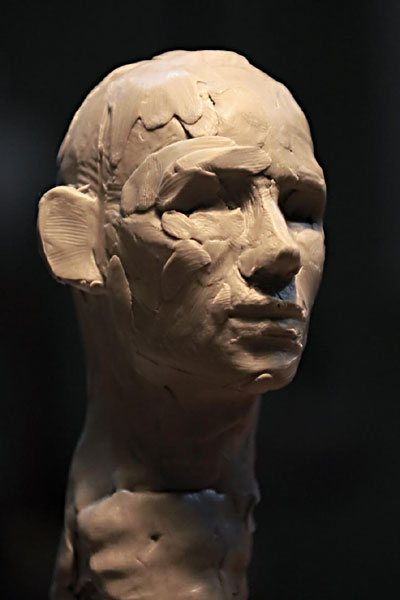
Another part of my work is contemporary work that combines the classical
or academic style that I like with modern ideas: a view towards society, a
perspective on things that happen or expressing my thoughts on things that
I feel. This part of the work is an attempt to harmonize what I like with
what I feel or would like to comment on. It's a job that I'm quite careful
about and try to convey as best as possible. It will be a job that takes quite a
long time and has a relatively high budget. Work in this section is targeted
at permanent materials such as bronze. As for marble or other permanent
materials, due to time and cost constraints, I will work on these as
prototypes for easier handling in the future and have plans to showcase in
a solo exhibition coming soon.
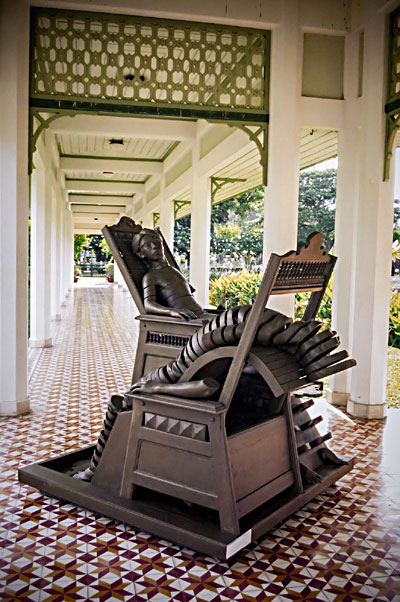
JY.
What are some of your major influences?
NT.
I am fond of ancient Greek, Roman and Indian sculptures, especially
Donatello's early Renaissance works. I find that Donatello's work is a role
model for many later artists who are very special. Another one is Antonio
Canova in the Neo-Classic period. Classic simplicity for different content or
interest, including Canova, is also an example of knowledge transfer.
Another foreign artist that I admire is Ai Weiwei, a contemporary Chinese
artist who has ingenious ways of expressing ideas. No matter how advanced
techniques of art are used, they may be used to create perfect art objects, or
bring the perfection of the greatness of the art. Another is Damien Hirst, a
British artist who has been successful for a long time.
JY.
What are the parallels between your art and your teaching?
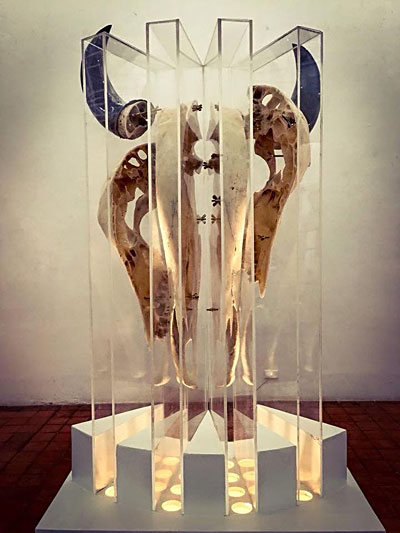
NT.
What I want to convey to students or artists who are developing
themselves is I want art workers to be open to accepting new things. In my
sense, even those things that are very old. For example, I am interested in
ancient civilizations, history and traditional techniques. We can apply these
things to contemporary art presentations. If we can connect history to our
way of thinking, to contemporary concepts I think presenting
contemporary art will be very interesting.
In my journey, I am always on the lookout for these things in societies
around the world, accepting and honoring things that happen especially in
diverse cultures. It can be a creative driver for an artist or creator to
progress.
I love photography and always try to hone my skills in this field. Of course I
may not be a professional photographer but I think from the perspective of
a sculptor, or an art worker, in terms of the emotion that I feel about a
thing and try to capture that in a photograph.
Natee Tubtimtong
Born - November 14,1977
Address - 109 Ladgrabang Road, Ladgrabang,Bangkok 10520
Tel - +6689-104-9927
Email - tubtimtong@hotmail.com
Education
1996 - The College of Fine Arts, Bangkok
2002 - B.F.A, Sculpture, Silpakorn University
2007 - M.F.A, Sculpture, Silpakorn University
2013 - Scholarships granted by the Italian Government to study sculpture
at Accademia di Belle Arti di Firenze, Italy.
Exhibition
2002 - The 19th exhibition of contemporary art by Young Artists on the
occasion of "Silpa Bhirasri Day", Silom Galleria.
2003 - Mini sculpture Exposition 2003 20th Anniversary of The Thai
Sculptor Association, Silom Galleria.
2004 - Krung Thai Sculpture Exhibition,Art and Culture Center, Silpakorn
University Sanamchandra Campus - Stock Market of Thailand Sculpture
Exhibition.
2006 - The 52nd National Exhibition of Art.
2007 - "Dichan Magazine"Sculpture Exhibition, Central World, Bangkok.
2008 - The 54th National Exhibition of Art.
2014 - Art Exhibition "Ravana Nightmare" at Subhashok Art Center - The
60th National Exhibition of Art.
2015 - Sculpture exhibition "5 Questions Forms" at National Art Gallery,
Chao Fa Road.
2016 - Sculpture exhibition "Subcutaneous Infrastructure" at Bridge Art
Space, Bangkok.
Award/Honors
2002. - 2nd Prize, Silver Medal, The 19th Exhibition of Contemporary Art
by Young Artist.
2006 - 3rd Prize, Bronze Medal,The 52nd National Exhibition of art.
2007 - 2nd Prize,Sculpture Competition in The 30th anniversary of
"Dichan Magazine".
2007 - Research Support Scholarship,Graduate School, Silpakorn
University.
2009 - General Prem Tinsulanonda Statesman Foundation Scholarship for
art creation.
2012 - Scholarships granted by the Italian Governmen to study sculpture at
Accademia di Belle Arti di firenze, Italy.
|